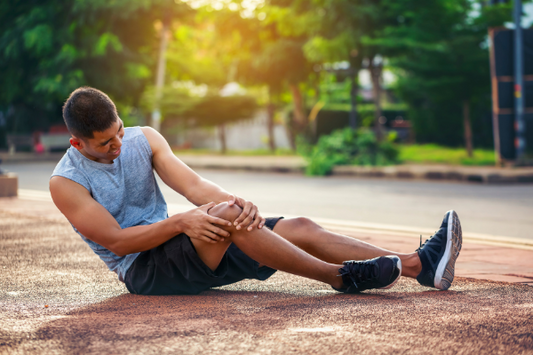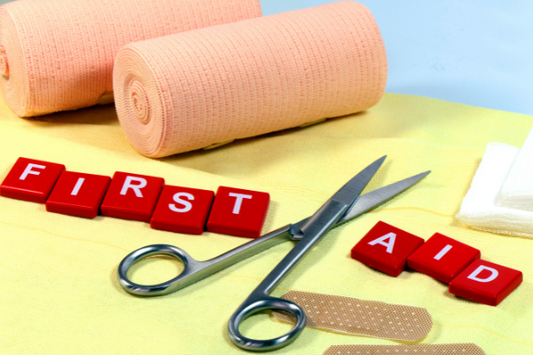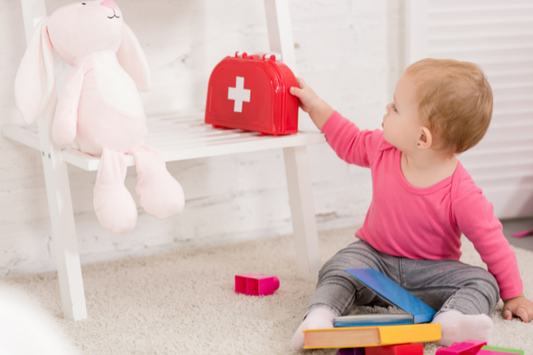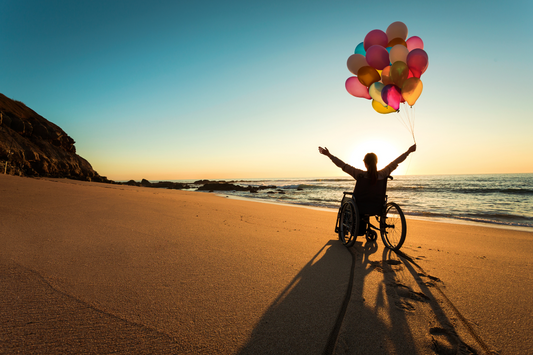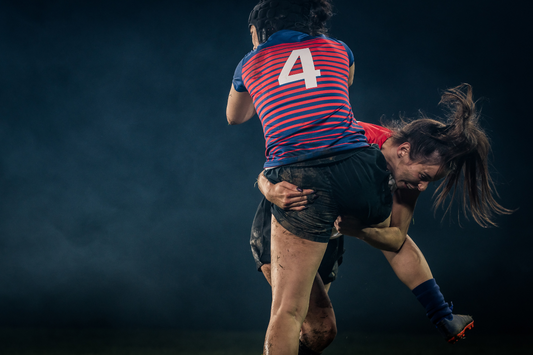Reducing Indoor Heat Risks for Vulnerable Australians
Australia's heat is the most destructive natural hazard in terms of loss of life.
We all know the dangers of getting too hot – sunburn, heat exhaustion, even heat stroke.

But did you know that some people are way more likely to overheat than others?
We're not just talking about athletes or people working outdoors.
The focus of this blog will be raising awareness regarding heat fatality to the elderly and persons with disabilities, as well as low income members of our community.
The purpose of this blog is to add to what you already know about those at risk of heat illness, so you can quickly identify additional situations where people are at risk.
I will explain why these groups are more at risk, signs to look out for, and what you can do to help.
But first, let me share the signs and symptoms of hyperthermia.
What does hyperthermia look like? See the signs, save a life
Heat stroke is a serious medical emergency that occurs when the body overheats and can't cool down.
It can affect anyone, but children, the elderly, and those with certain health conditions are more vulnerable.2 Recognising the signs is crucial for preventing serious complications.
Children:
- High body temperature: A temperature of 40°C or higher is a major red flag.
- Behavior changes: Irritability, confusion, or seizures can indicate heat stroke.
- Skin: Skin may be hot and dry, or sweaty depending on the cause of the heat stroke.
- Other symptoms: Headache, nausea, vomiting, and rapid breathing are also common.

Adults:
- Similar to children, but may also experience:
- Dizziness and fainting
- Muscle cramps
- Rapid heartbeat

Elderly:
- May have less obvious symptoms:
- Weakness and fatigue
- Confusion and disorientation
- May not sweat as much, even if severely dehydrated

If you suspect heat stroke, call Triple Zero (000) immediately. While waiting for help, move the person to a cool place, remove excess clothing, and cool them down with cool water or ice packs.14
Why are some people more vulnerable to the heat?
Data gathered by Macquarie University showed that the greater proportion of heat related fatalities occurred in males, living in older styled homes with no airconditioning.
The risk of dying indoors from hyperthermia increased with age, socio-economic disadvantage, social isolation, geographical remoteness, presence of disabilities and some types of medication.
Money matters:
If you can't afford air conditioning or fans, staying cool can be a real struggle. This is a big problem for many families and older people on fixed incomes.
Health Limitations:
People with health conditions like heart problems, diabetes, or breathing difficulties are more likely to overheat. Some medications can make it harder for the body to regulate temperature too.
Mobility:
If you have a disability that makes it hard to move around, getting to a cool place or even just getting a glass of water can be tough.
Kids & babies:
Young kids get hot faster than adults. They also might not be able to tell us when they're thirsty or feeling unwell.
Isolated Living Situation:
When you live by yourself, there's no one to check on you and make sure you're okay, especially if you're older or have health issues.

Thinking Differently: It's Not Just About the Weather
Heatstroke isn't just about hot days. It's about how our society is set up. If people can't afford decent housing, don't have access to healthcare, or are isolated from their community, they're at much higher risk. We need to think about these bigger issues if we truly want to protect everyone.
What Can We Do?
Here's how we can all make a difference:
Spread the word:
Talk to your friends, family, and neighbors about the dangers of heat. Make sure they know how to stay safe and who to call for help.
Sports Medicine Australia (SMA)
has developed comprehensive extreme heat policies to guide sporting organizations in managing heat-related risks. These policies provide evidence-based recommendations for:
-
Heat risk assessment: Using tools like the Wet Bulb Globe Temperature (WBGT) to determine the level of risk.
-
Modifying activity: Adjusting training intensity, duration, and scheduling based on heat conditions.
-
Hydration strategies: Encouraging regular fluid intake before, during, and after exercise.
-
Cooling strategies: Implementing effective cooling methods to reduce core body temperature.
- See the full policy here
Check on others:
During heatwaves, check on those who might be struggling, especially older people, people with disabilities, and those living alone.
Support community services:
Donate to or volunteer with organizations that help vulnerable people during heatwaves.
They might offer things like free transport to cooling centers, home visits, or financial assistance.
Make your community more accessible:
Advocate for more cooling centers in public spaces and accessible transport options.
Be a good neighbor:
Offer to help with things like shopping or errands for those who might have trouble getting out in the heat.
Knowing the Signs and Acting Fast
If someone is showing signs of heat stroke, every second counts:
- Call for help: Call Triple Zero (000) immediately.
- Get them cool: Move them to a cool place immediately, commence fanning as soon as possible.
- Cool them down quickly:
- Cool water: If possible, get them into a cool bath or shower.
- Strip, soak and fan: Take off excess clothing, soak them with icy cool water, and fan them.
- Ice packs: Put ice packs on their groin, armpits, and neck while fanning them.

Where to Learn More:
Here are some websites with helpful information:
Australian Institute of Health and Welfare (AIHW): https://www.aihw.gov.au/
Department of Health and Aged Care: https://www.health.gov.au/
National Disability Insurance Scheme (NDIS): https://www.ndis.gov.au/
Macquarie University https://researchers.mq.edu.au/en/publications/heatwave-fatalities-in-australia-20012018-an-analysis-of-coronial
Australian National University
Looking Out for Each Other
We all have a role to play in keeping our communities safe from the heat.
By understanding the risks, taking action to help those in need, and knowing what to do in an emergency, we can make a real difference.
Let's look out for each other and make sure everyone survives this summer.


